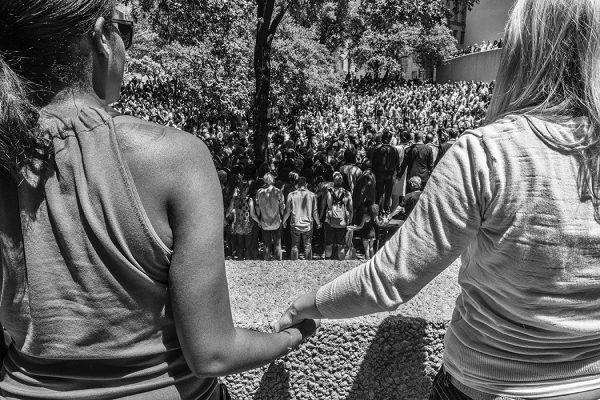
School is back in session, this year with a new policy for transparent backpacks. The transparency requirement, established with community input, prevents items from being hidden that could risk putting students and staff in harm’s way.
Transparency is critical to honesty, accountability and establishing trust. Transparent backpacks will not solve all the safety concerns in school, but I got to wondering how being transparent might impact community?
I’ve just learned about something that has been hidden for more than 2,000 years. In as much as what has been hidden comes from the Christian New Testament, its message is relevant to faithful living regardless of your tradition.
New Testament scholar Elizabeth Schrader discovered something that had been hidden in the Gospel of John’s most ancient historical writing. Known as Papyrus66, circa 200 CE, the writing is housed in a library in Cologny-Geneva, Switzerland.
Access to this original papyrus required travel, academic credentials, time and money. Only recently has digitization made these ancient manuscripts more widely accessible — opening a new world of transparency!
With the ability to examine P66 by computer and magnify the text, Schrader discovered alterations scratched into the letters.
The original text did not have the name Martha. Throughout John 11 and 12, where the name Martha appears, an ancient editor had changed what was originally “Mary.”
In addition, pronouns are altered and “sister” is made plural. These intentional edits resulted in making a story that was initially about Mary, the sister of Lazarus, into a story about two sisters, Mary and Martha.
These edits hid the fact that Mary made the Messianic Proclamation in John 12, not Martha — who then disappears from the gospel story. Mary is present at the cross and witnesses the resurrection.
Schrader’s discovery exposes that John 11 and 12 is a story about Lazarus’ sister, Mary Magdalene, who is from Bethany.
“Magdala,” a non-existent city in the first century, is not where Mary was from. Rather the Aramaic word “Magdala” is a title given to Mary meaning “Tower.”
Schrader’s work was published in the Harvard Theological Review and confirmed by the translation committee of the Greek New Testament.
Whether or not you believe in Jesus as the Messiah, this is a story about a woman of faith that was kept hidden behind the name Martha by someone in the fourth century who edited the oldest text of John’s gospel.
What were they trying to hide to affect the centuries to follow? What harm has been created by a lack of transparency?
Christian history scholar Diana Butler Bass wonders what Christianity would look like today if these 2,000 years were informed by “Mary, you are the Tower, and by this Tower we shall stand” and not only “Peter, you are the Rock and upon this Rock I will build my church”?
What would our faith lives look like if “Mary the Tower” was the story? How might our homes, families, neighborhoods be different if we really knew one another’s story?
How can transparency reduce our risk of harm?





